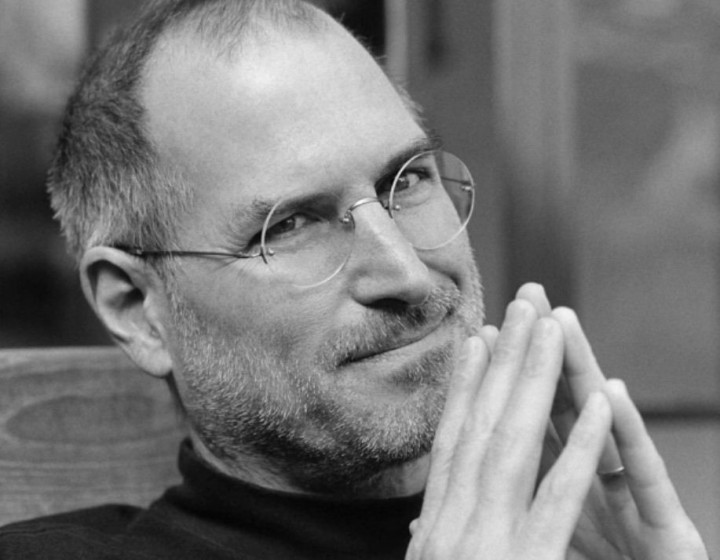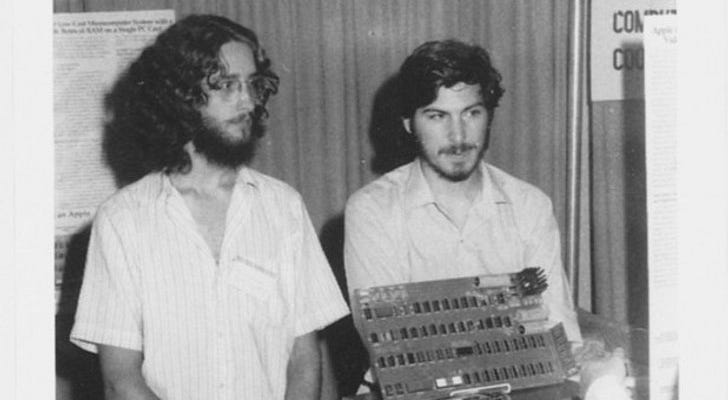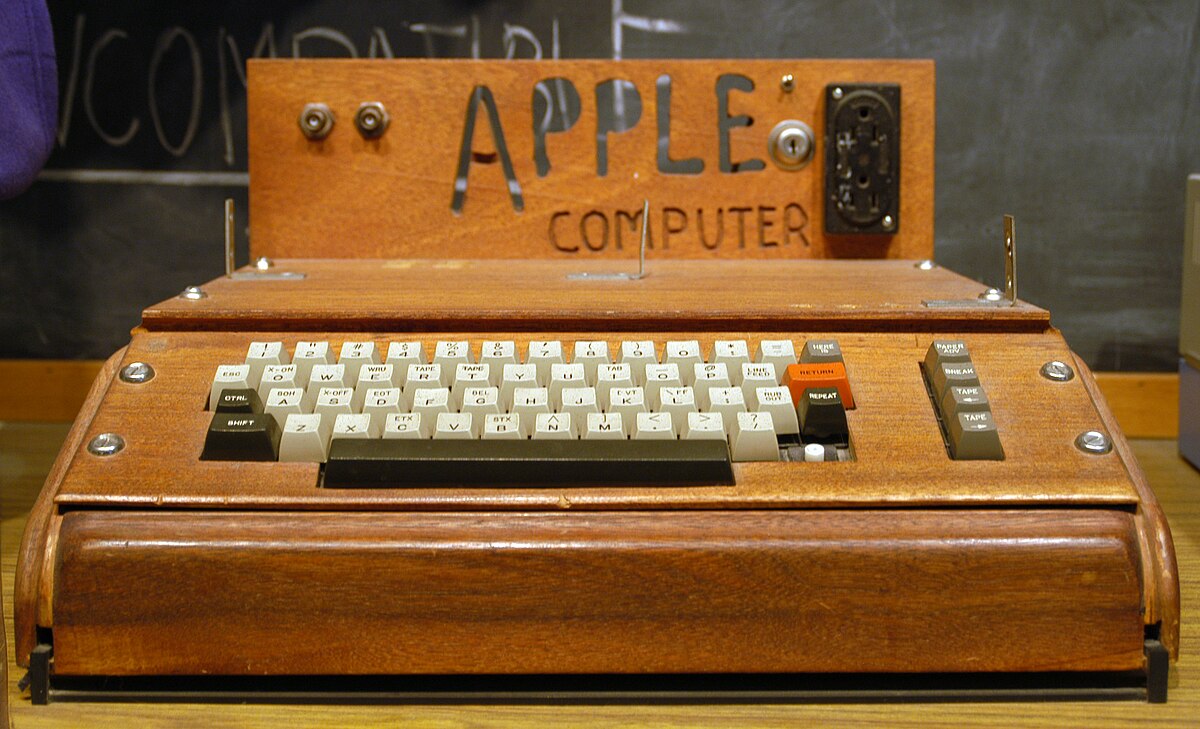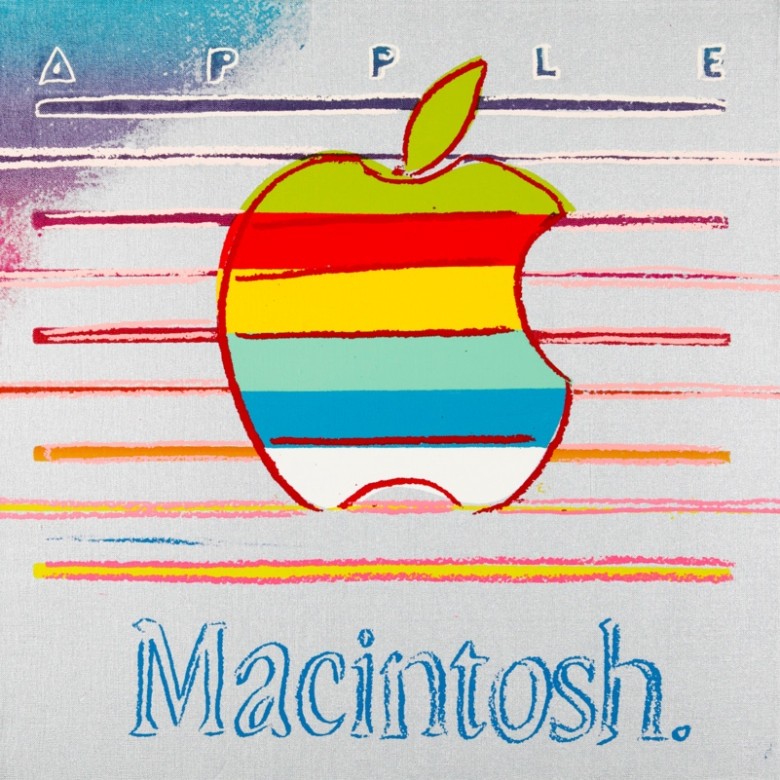Apple Logo Evolution Story:
The bitten Apple is one of the world’s most notable and recognizable logos. The logo of well-known computer manufacturer Apple Inc., this logo has been used and changed in its over 3-decade tenure.
Here is a bite out of Apple’s history. (Scroll down for quick bites)

The bitten Apple is one of the world’s most notable and recognizable logos. The logo of well-known computer manufacturer Apple Inc., this logo has been used and changed in its over 3-decade tenure.
Here is a bite out of Apple’s history. (Scroll down for quick bites)






The bitten Apple is one of the world’s most notable and recognizable logos. The logo of well-known computer manufacturer Apple Inc., this logo has been used and changed in its over 3-decade tenure.
Here is a bite out of Apple’s history. (Scroll down for quick bites)

The bitten Apple is one of the world’s most notable and recognizable logos. The logo of well-known computer manufacturer Apple Inc., this logo has been used and changed in its over 3-decade tenure.
Here is a bite out of Apple’s history. (Scroll down for quick bites)
The history of the bitten apple:
The “bitten apple” is the logo of the well-known computer manufacturer Apple Inc. It is one of the easily recognizable logos in the whole wide world, a fitting symbol to the name of the company behind the picture. Here is one bite out of the apple’s history, to enlighten readers on how the logo sprang into existence.

The Apple logo was not always the same, or even remotely similar. Apple’s first logo was created by Apple Computer Co co-founder, Ronald Wayne, during the company’s incorporation in the 1970s. The logo was as different as could be from its current look, although still related to the Apple.
The first image to represent the computer company was Isaac Newton, the man who revolutionized science with his discoveries on gravity. How did he figure it out? An apple fell on his head!
Apple’s first logo was a depiction of this event, with Newton sitting under an Apple tree.
The Logo included a quote from William Wordsworth, a romantic English poet; “Newton… a mind forever voyaging through strange seas of thought.” The poem was written on the frame of the logo.
The Apple Gets Its Turn:
The Newton logo was short lived, as Steve Jobs reportedly believed that it was too old-fashioned, or arcane.
The famous CEO soon hired graphic designer Rob Janoff, who then created the now classic and world-renowned logo of the bitten apple. Jobs quickly threw out the old Newton logo, and Apple’s logo was fully established and used by the end of the company’s first year.
Janoff’s original apple logo contained a rainbow spectrum, a nod towards Apple’s computer Apple II which was the world’s first computer with color display. The logo debuted a little before the computer’s launch. Janoff has said that there was no rhyme or reason behind the placement of the colors themselves, noting that Jobs wanted to have green at the top “because that’s where the leaf was.”
There have been many rumors and speculations about the new logo. Some people think that the shift to the apple design was to make it more appropriate for the company name. There are also people who think that the apple symbolizes Alan Turning, the father of modern computing, who took a bite out of an apple poisoned with cyanide that ultimately took his life.
History of Apple: The story of Steve Jobs and the company he founded:

Our huge, comprehensive rundown of Apple's history will take you from its origins in the 1970s, Jobs' departure and later return to Apple. Follow the Apple story with us!
In this feature we tell the story of Apple. We start with the early days, the tale of how Apple was founded, moving on through the Apple I, to the Apple II, the launch of the Macintosh and the revolution in the DTP industry... To the tech-industry behemoth that we know and love today.
So sit back as we take a stroll down memory lane. Why not brush up on what really happened before you go and watch the Steve Jobs movie, with its interesting interpretations of several important events in the company's history?
On 1 April 1976 Apple was founded, making the company 41 years old as of the 1 April 2017 - here's a historical breakdown of the company.
The history of Apple:
Our Apple history feature includes information about The foundation of Apple and the years that followed, we look at How Jobs met Woz and Why Apple was named Apple. The Apple I and The debut of the Apple II. Apple's visit to Xerox, and the one-button mouse. The story of The Lisa versus the Macintosh. Apple's '1984' advert, directed by Ridley Scott. The Macintosh and the DTP revolution.
We go on to examine what happened between Jobs and Sculley, leading to Jobs departure from Apple, and what happened during The wilderness years: when Steve Jobs wasn't at Apple, including Apple's decline and IBM and Microsoft's rise and how Apple teamed up with IBM and Motorola and eventually Microsoft. And finally, The return of Jobs to Apple.
The foundation of Apple::

The history of everyone's favourite start-up is a tech fairytale of one garage, three friends and very humble beginnings. But we're getting ahead of ourselves…
The two Steves - Jobs and Wozniak - may have been Apple's most visible founders, but were it not for their friend Ronald Wayne there might be no iPhone, iPad or iMactoday. Jobs convinced him to take 10% of the company stock and act as an arbiter should he and Woz come to blows, but Wayne backed out 12 days later, selling for just $500 a holding that would have been worth $72bn 40 years later.
How Jobs met Woz:

Jobs and Woz (that's Steve Wozniak) were introduced in 1971 by a mutual friend, Bill Fernandez, who went on to become one of Apple's earliest employees. The two Steves got along thanks to their shared love of technology and pranks.
Jobs and Wozniak joined forces, initially coming up with pranks such as rigging up a painting of a hand showing the middle-finger to be displayed during a graduaction ceremony at Jobs' school, and a call to the Vatican that nearly got them access to the Pope.
The two friends were also using their technology know-how to build 'blue boxes' that made it possible to make long distance phone calls for free.Jobs and Wozniak worked together on the Atari arcade game Breakout while Jobs was working at Atari and Wozniak was working at HP - Jobs had roped Woz into helping him reduce the number of logic chips required. Jobs managed to get a good bonus for the work on Breakout, of which he gave a small amount to Woz.
The first Apple computer:

The two Steves attended the Homebrew Computer Club together; a computer hobbyist group that gathered in California's Menlo Park from 1975. Woz had seen his first MITS Altair there - which today looks like little more than a box of lights and circuit boards - and was inspired by MITS' build-it-yourself approach (the Altair came as a kit) to make something simpler for the rest of us. This philosophy continues to shine through in Apple’s products today.
So Woz produced the the first computer with a typewriter-like keyboard and the ability to connect to a regular TV as a screen. Later christened the Apple I, it was the archetype of every modern computer, but Wozniak wasn't trying to change the world with what he'd produced - he just wanted to show off how much he'd managed to do with so few resources.
Speaking to NPR (National Public Radio) in 2006, Woz explained that "When I built this Apple I… the first computer to say a computer should look like a typewriter - it should have a keyboard - and the output device is a TV set, it wasn't really to show the world [that] here is the direction [it] should go [in]. It was to really show the people around me, to boast, to be clever, to get acknowledgement for having designed a very inexpensive computer."
Why Apple was named Apple:
The name Apple was to cause Apple problems in later years as it was uncomfortably similar to that of the Beatles' publisher, Apple Corps, but its genesis was innocent enough.
Speaking to Byte magazine in December 1984, Woz credited Jobs with the idea. "He was working from time to time in the orchards up in Oregon. I thought that it might be because there were apples in the orchard or maybe just its fructarian nature. Maybe the word just happened to occur to him. In any case, we both tried to come up with better names but neither one of us could think of anything better after Apple was mentioned."
According to the biography of Steve Jobs, the name was conceived by Jobs after he returned from apple farm. He apparently thought the name sounded “fun, spirited and not intimidating.”
The name also likely benefitted by beginning with an A, which meant it would be nearer the front of any listings.
The Macintosh:

We'll always remember Steve Jobs as the man who launched the Macintosh, but he only arrived on the project in 1981 - two years after Jef Raskin had started work on the low-cost computer for home and business use. Jobs quickly stamped his mark on it, and Raskin left in 1982 - before the product shipped. We must give Raskin credit for original idea and its name (his favourite kind of apple was the McIntosh, but this was tweaked to avoid infringing copyright), but otherwise the machine that eventually launched was a fair way away from the one he’d originally envisaged.
Raskin's early prototypes had text-based displays and used function keys in place of the mouse for executing common tasks. Raskin later endorsed the mouse, but with more than the single button that shipped with the Macintosh. It was Jobs and Bud Tribble, the latter of whom is still at Apple (he is Vice President of Software Technology), that really pushed the team to implement the graphical user interface (GUI) for which it became famous.
They saw the potential of the GUI’s desktop metaphor after seeing one in use at Xerox PARC, and they'd already laid much of the groundwork for Apple's own take on the system as part of the Lisa project. Tribble tasked the Macintosh team with doing the same for their own machine which, in hindsight, may have been the most important directive ever issued by anyone inside Apple.
If the Macintosh team had continued down the text-and-keyboard path, it's unlikely their product would have sold as well as it did - and Apple, as we know it, might not exist today at all.




No comments:
Post a Comment